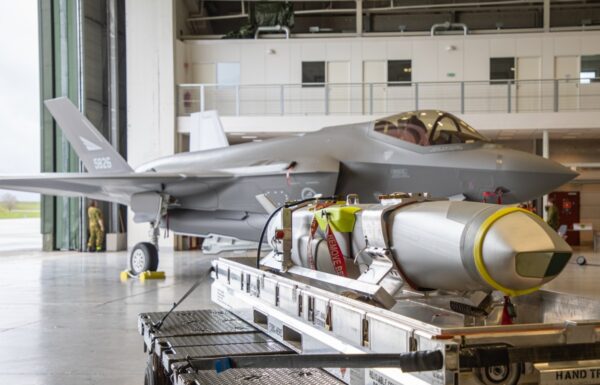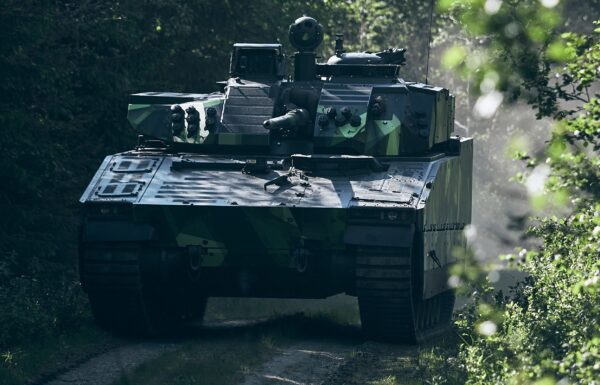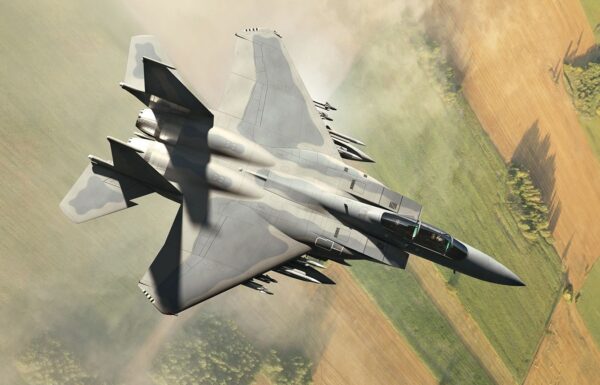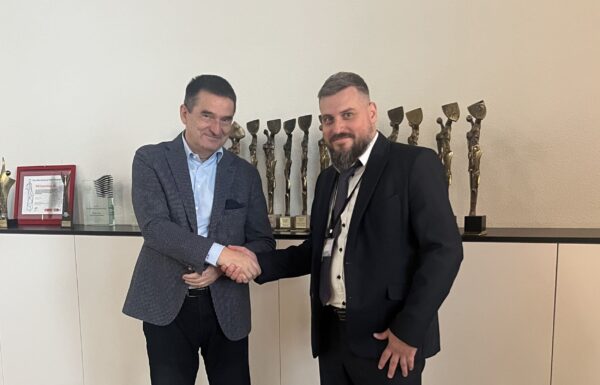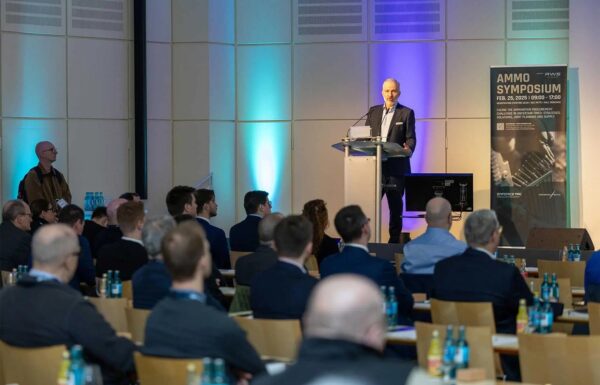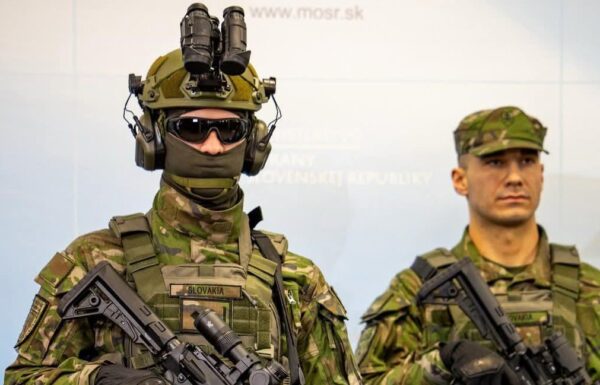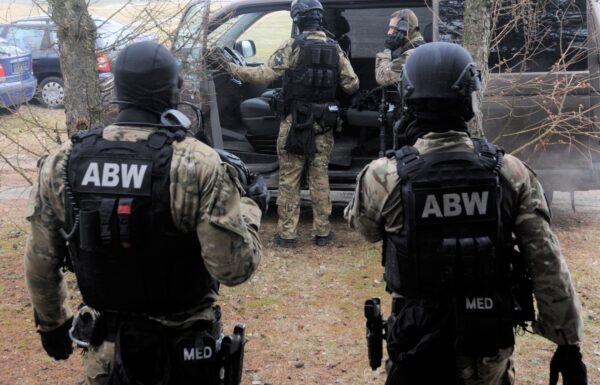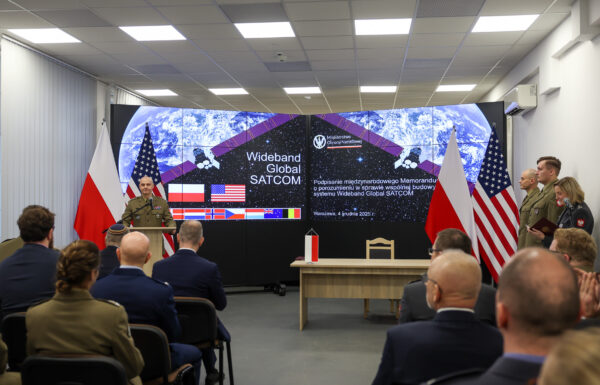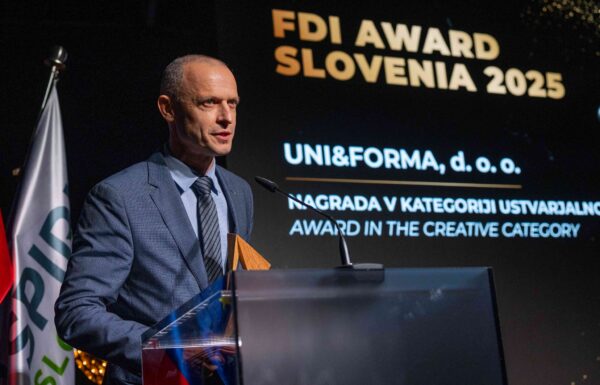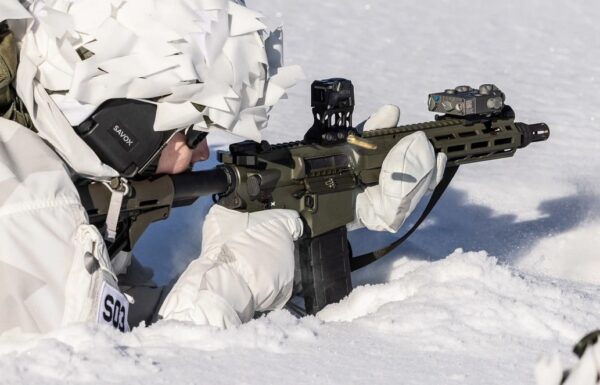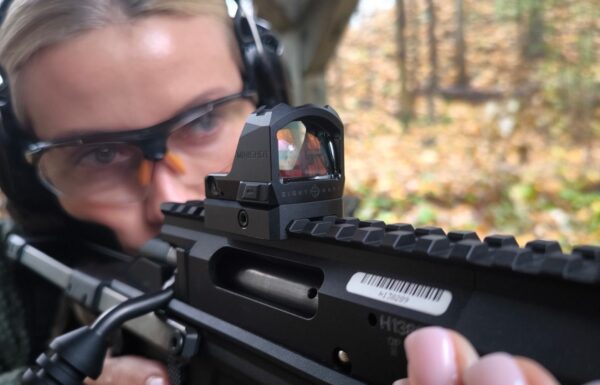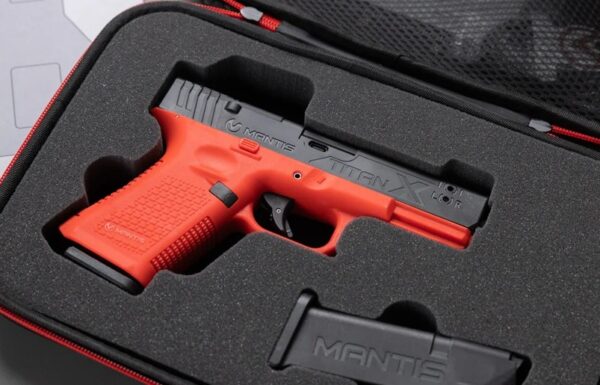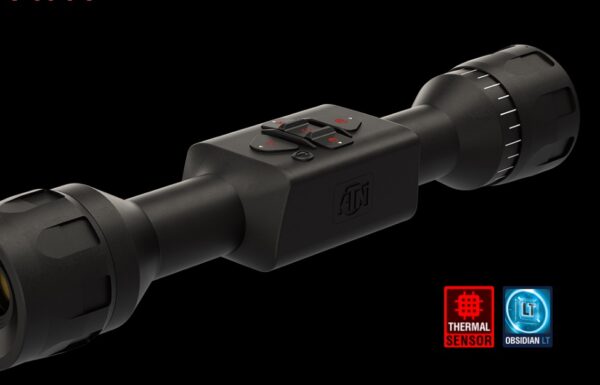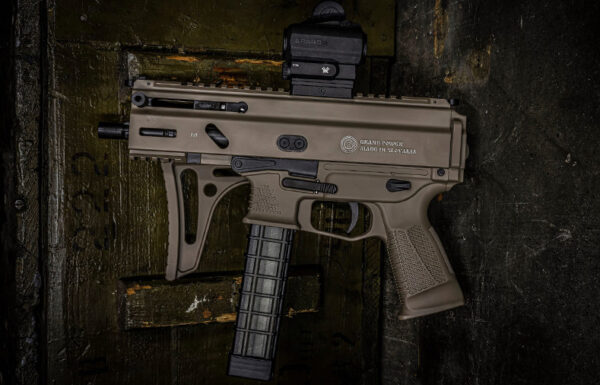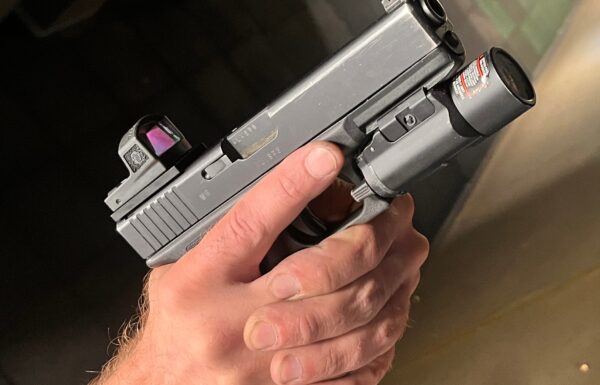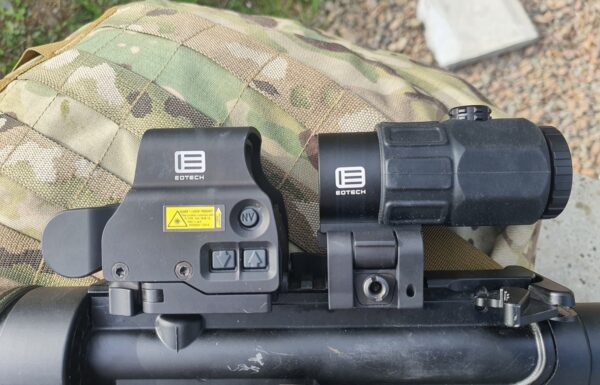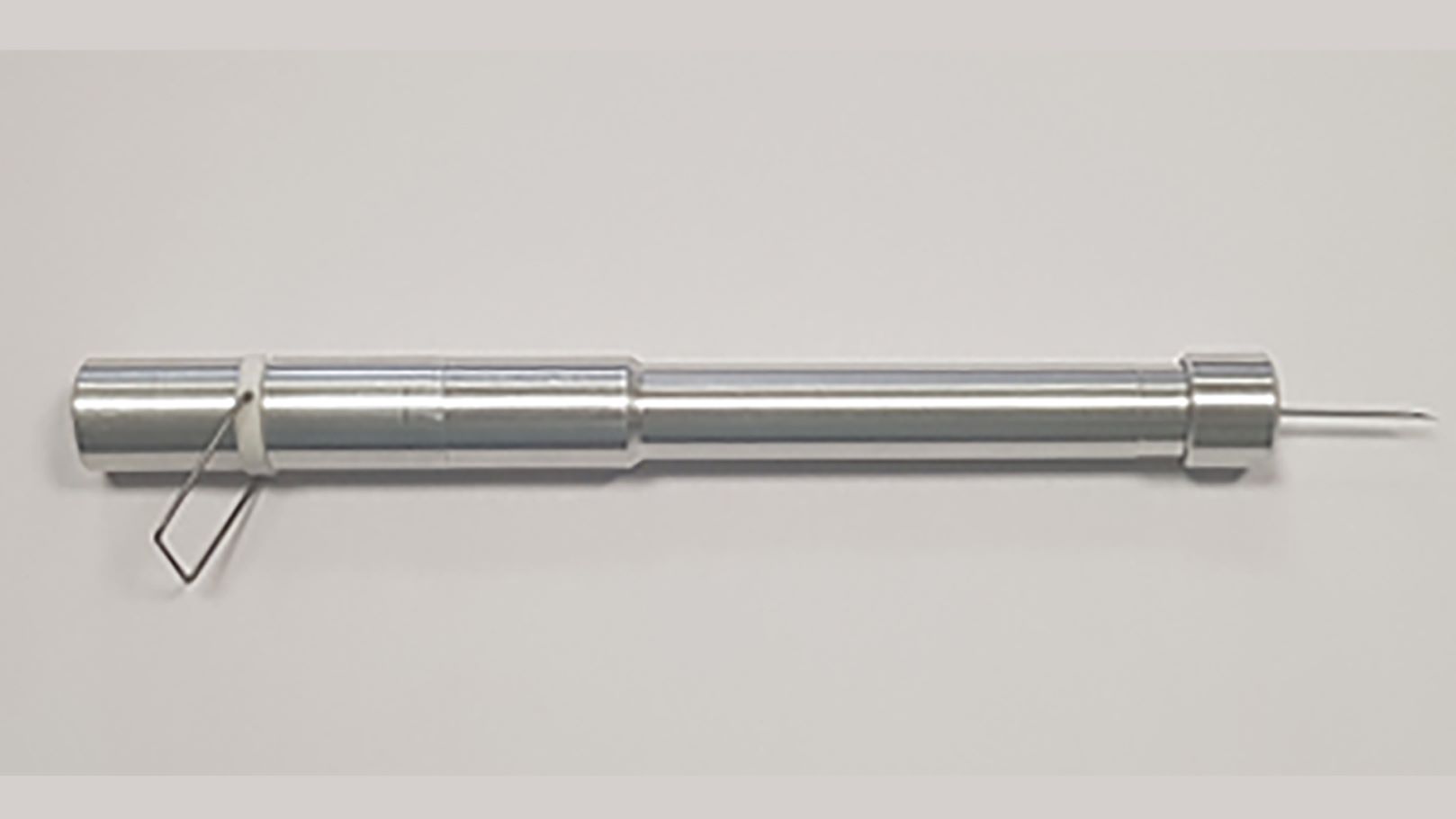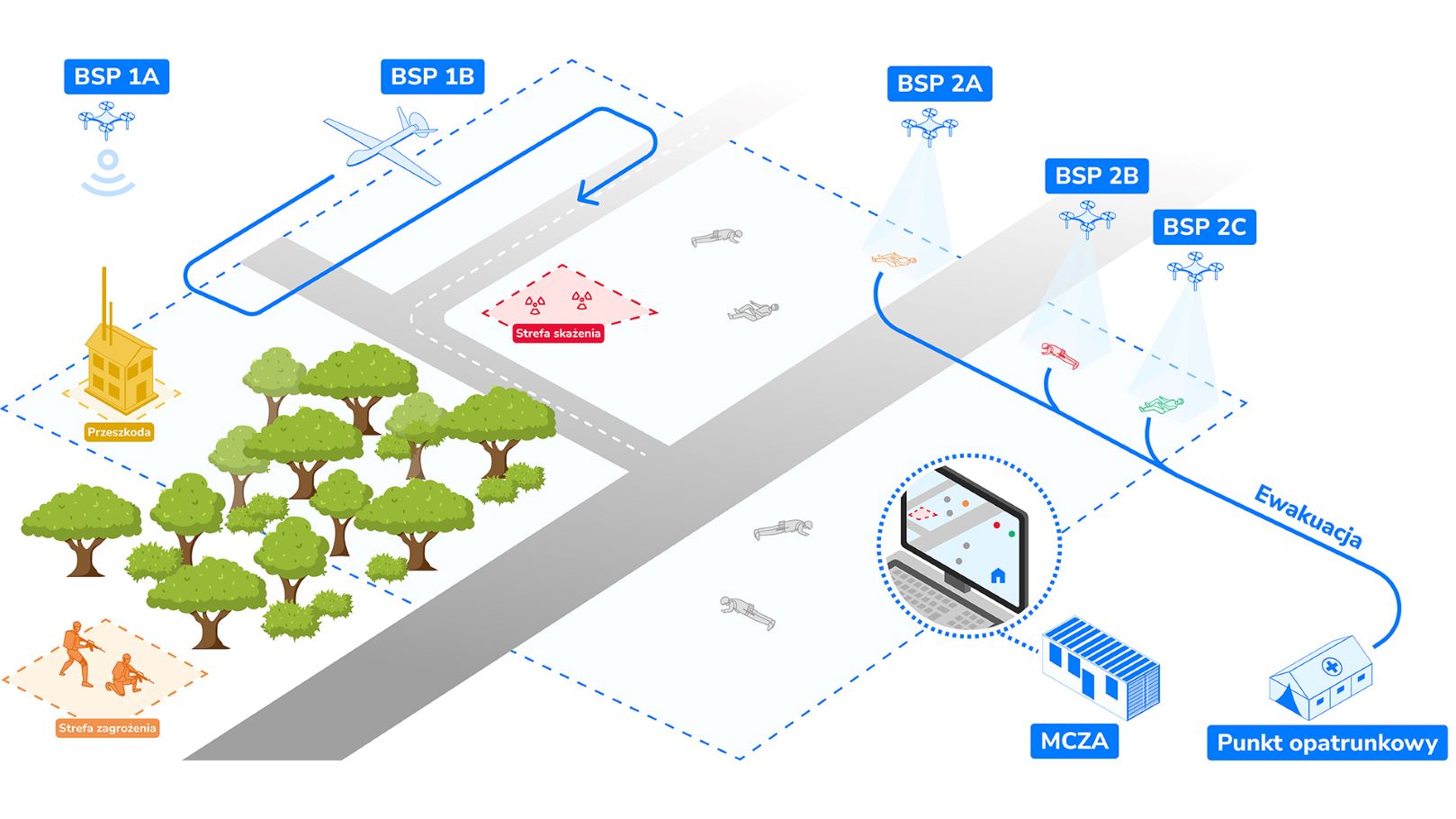Devices utilizing quantum phenomena for data security, a system supporting the medical evacuation of soldiers from the battlefield, and navigating unmanned aerial vehicles—these flagship technologies developed by scientists at the Polish Military University of Technology in Warsaw (Wojskowa Akademia Techniczna, WAT), including three competing for the Defender award, will be showcased at the 32nd International Defence Industry Exhibition (MSPO) in Kielce.
The exhibition will run from September 3 to 6, 2024, with the last day open to the general public. WAT’s inventions will be presented as part of the 25th Exhibition of the Polish Armed Forces.
As emphasized by the Rector-Commandant of WAT, the offerings presented at this year’s MSPO are the university’s response to the specific needs of a technologically advanced military.
“The Military University of Technology (WAT) makes a tangible contribution to the development of our Armed Forces. The outcomes of projects carried out by WAT scientists, within the framework of research and industry consortia, are being implemented into production and becoming part of the Polish Army’s equipment. Examples include the long-range P-18 PL radar or the planned production of the new Borsuk amphibious infantry fighting vehicle. WAT effectively contributes to what the Polish Armed Forces possess today. In the last decade, there have been as many as 35 implementations in which our Academy has participated. Quantum, laser, optoelectronic, and IT technologies have been applied in a range of new products, enabling our army to become even more technologically advanced. These solutions, also intended for other services, will be showcased at this year’s MSPO,” says Brig. Gen. Prof. Przemysław Wachulak, Ph.D., Eng.
Currently, the Military University of Technology is carrying out 35 projects related to security and defense, funded by domestic sources, and 17 projects financed by international sources (EDA, EDF, NATO). The inventions showcased at the exhibition exemplify the effectiveness of the university’s research and implementation activities.
WAT Technologies submitted for the Defender award competition:
The WAT Institute of Optoelectronics has submitted the Modular Quantum Optical Cryptography System for the competition. The devices have been classified in the category of command support, communications and IT equipment, cybersecurity, cryptology, identification, and navigation. The system consists of three components: a quantum random number generator, a quantum key distribution system, and an optical phase encoding system. Each of these modules is an innovative device that utilizes quantum phenomena to secure data transmitted in optical telecommunication networks.
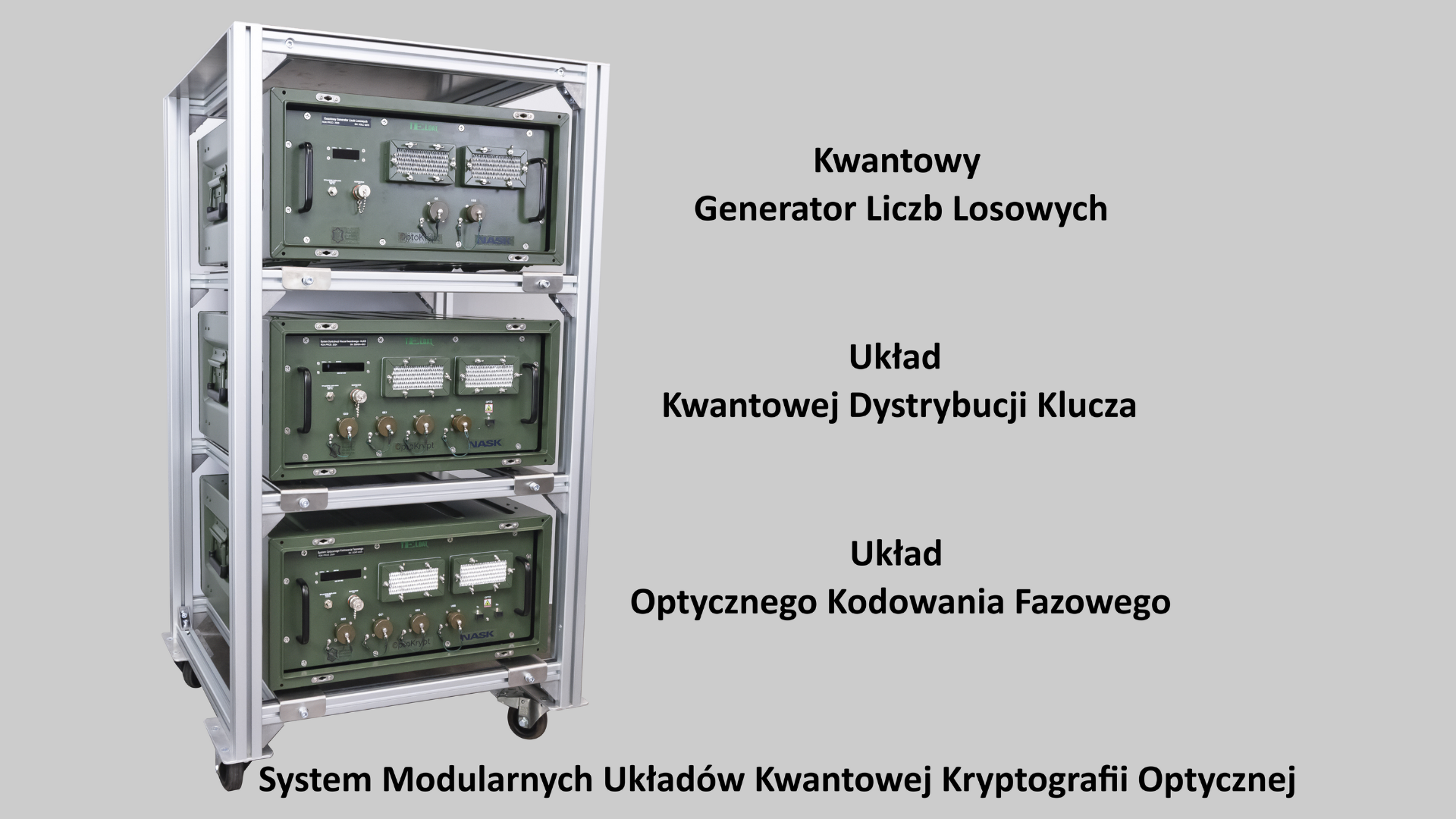 Modular Quantum Optical Cryptography System
Modular Quantum Optical Cryptography System
The Faculty of Electronics at WAT has developed a Mobile Electronic Warfare Laboratory Station – MSL WRE. In the Defender award competition, it falls under the category of training support equipment. The system serves as a tool for electronic warfare. The exhibit consists of two elements. The first is a vehicle that acts as the carrier platform for the Mobile Laboratory Station, equipped with an antenna system. The second is an unmanned aerial vehicle (UAV), or drone, which carries the transmitting and receiving systems. Signals in the L-band are transmitted and received in a closed circuit, without external emission. The results are displayed on four monitors inside the base vehicle.
 Mobile Electronic Warfare Laboratory Station – MSL WRE
Mobile Electronic Warfare Laboratory Station – MSL WRE
Another technology developed with the participation of WAT was submitted by CRW Telesystem Mesko, an industrial partner of the WAT Institute of Optoelectronics. The Integrated Optoelectronic Support Environment for the Modern Battlefield will also enhance the competition group in the categories of command support, communications and IT equipment, cybersecurity, cryptology, identification, and navigation. The device performs four functions: a laser warning system, a laser rangefinder, a friend-or-foe identifier, and free-space optical communication. The laser warning system was specifically developed for Polish Army vehicles. It can determine the direction from which laser radiation, emitted by a hostile target designator, originates. Information about the detected threat is automatically relayed to the Battle Management System without human intervention. As a result, the presented system enables the warning of other vehicles in the convoy about the existing threat.
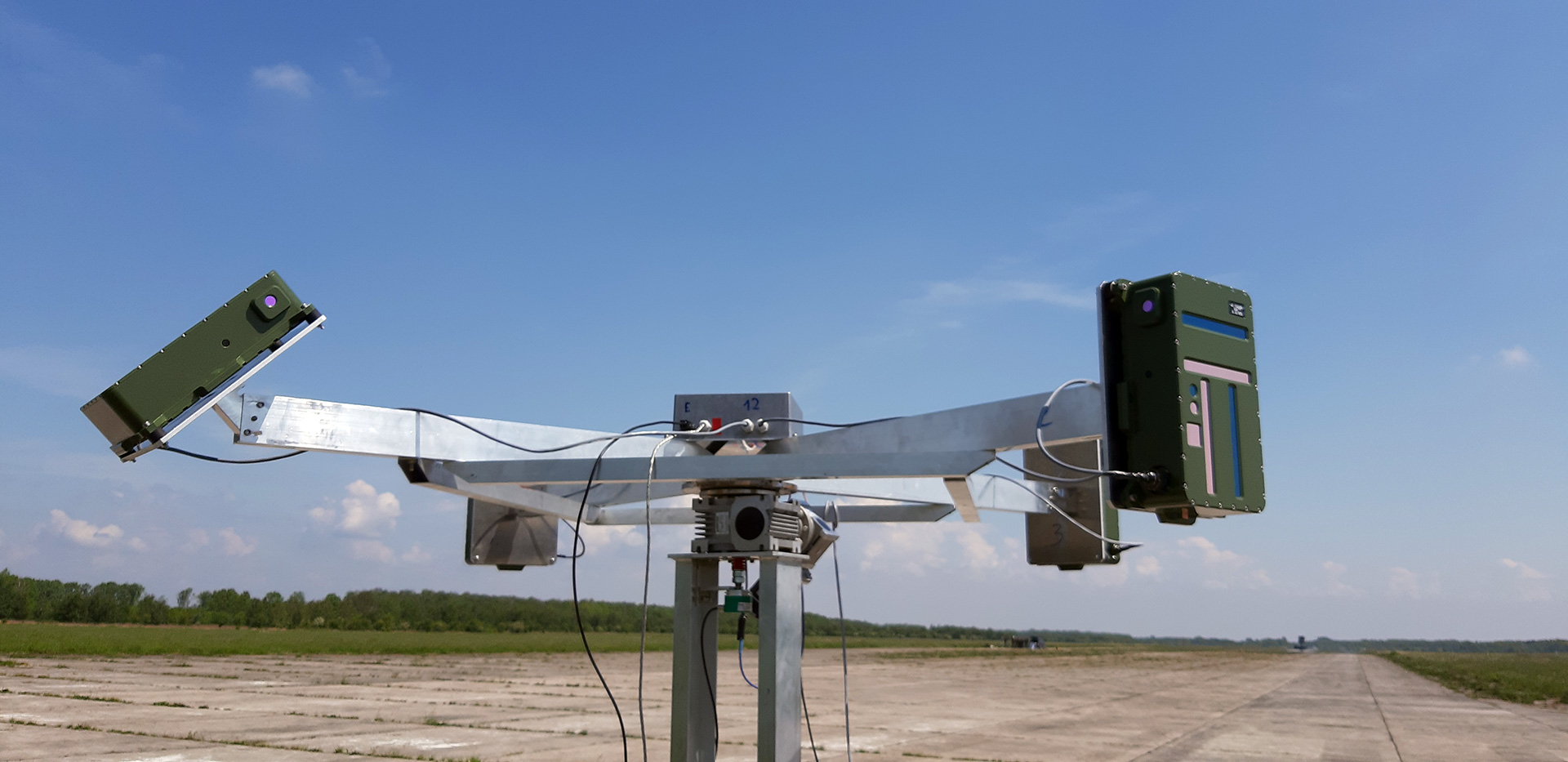 The Integrated Optoelectronic Support Environment for the Modern Battlefield
The Integrated Optoelectronic Support Environment for the Modern Battlefield
Ready-to-implement technologies at WAT booth
The medical evacuation decision support system, based on monitoring soldiers’ vital signs and enhanced situational awareness, was developed at the Faculty of Electronics at WAT. The devices embedded in the uniform continuously monitor the soldier’s health and analyze it in real-time. On the battlefield, this helps medical rescue teams to sort the wounded according to the severity of injuries and prognosis, in a process known as triage. This system supports medics in the decision-making process for evacuation. The monitored vital signs are transmitted using a specially designed communication protocol via an integrator to the HMS C3IS Jasmin at the brigade-level medical support group station. At the WAT booth, visitors will be able to see elements of the system placed on a human mannequin, as well as a soldier’s personal terminal with part of the communication system and a workstation for the medical support group, featuring an active analysis and inference algorithm on the screen along with the medical portal.
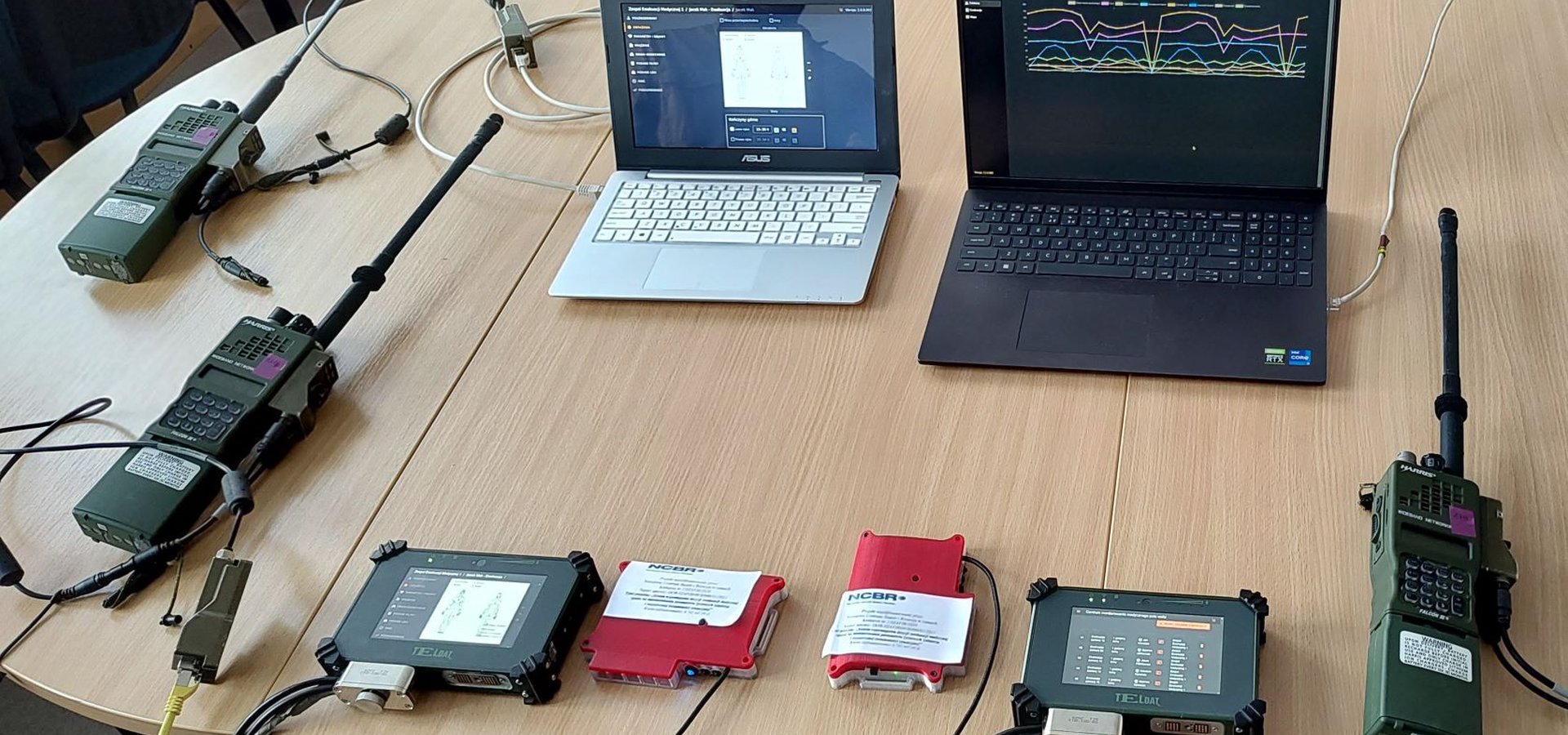 The medical evacuation decision support system, based on monitoring soldiers’ vital signs and enhanced situational awareness
The medical evacuation decision support system, based on monitoring soldiers’ vital signs and enhanced situational awareness
Another interesting technology related to military medicine is the Automatic Syringe developed at the WAT Technology Transfer Center. It is designed to deliver medication to soldiers stored in commonly known “insulin ampoules.” Injections can be administered with one hand, allowing for self-administration of intramuscular medication (even through outer clothing) efficiently in situations of immediate health and life-threatening conditions, with particular emphasis on battlefield scenarios. The correctness of the syringe’s design assumptions, as well as the effectiveness of the needle’s antibacterial coating, have been verified through a prototype and are legally protected. Potential users of this solution include the Polish Armed Forces, Border Guard, Police, Fire Department, and rescue services.
In the area of cybersecurity, WAT will present the RPaSD tool during MSPO, designed to detect the sources of false information in social media. This innovative software was developed at the Faculty of Cybernetics and is designed to meet the challenges of identifying and analyzing the spread of information in networks.
 RPaSD tool for detection of false information in social media
RPaSD tool for detection of false information in social media
The same faculty will also present the concept of visual navigation for small unmanned aerial vehicles (UAVs). The visual navigation module allows drones to navigate autonomously in scenarios without GPS signals, such as in electronic warfare conditions. UAVs play a crucial role in modern military operations, and the module proposed by WAT experts integrates visual data from cameras and compasses while incorporating data from accelerometers to enhance their precision and reliability. By using the visual navigation module, UAVs can either continue their mission or abort it and return to a safe zone in an electronic warfare environment, preventing the drone from being destroyed or captured by enemy forces.
 concept of visual navigation for small unmanned aerial vehicles
concept of visual navigation for small unmanned aerial vehicles
The last technology to be showcased at the WAT booth combines medicine, IT, and navigation. Developed by the Faculty of Civil Engineering and Geodesy, the Smart Life Map is another system designed to rescue wounded soldiers from the battlefield, this time with the involvement of drones. It enables the location of casualties on the battlefield, preliminary assessment of their physical condition, and the provision of medical assistance. The system utilizes geoinformation and biomedical sensors. The application provides functionalities for UAV pilots and medical rescuers, including drone mission planning and execution, building photo sketches, marking casualties and supplementing vital signs measurements, marking contamination, hazards, and obstacles, displaying passability layers, and determining routes to reach casualties and evacuation paths.
Additionally, the WAT booth will showcase the competencies of the WAT Military Training Center in battlefield rescue. Visitors will be shown the equipment used by rescuers, methods of providing first aid, and techniques for stopping severe bleeding (using mannequins).
WAT students will present their interest groups, demonstrating how the university supports their personal development in areas such as shooting, mountain climbing, skydiving, diving, and asymmetric warfare. The exhibition will include equipment used by these groups and an interactive shooting range.
During MSPO, attendees will also have the opportunity to learn about the current military and civilian study programs offered at WAT.


